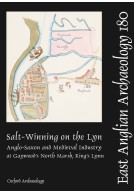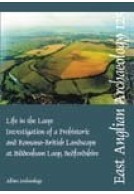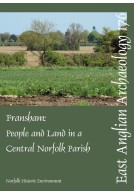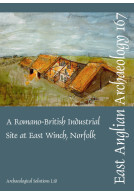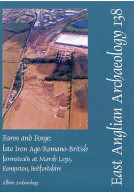Google Books previews are unavailable because you have chosen to turn off third party cookies for enhanced content. Visit our cookies page to review your cookie settings.
EAA 178: Hinxton, Cambridgeshire: Part I (Paperback)
Excavations at the Wellcome Genome Campus: Late Glacial Lithics to the Icknield Way
Imprint: East Anglian Archaeology
Series: East Anglian Archaeology Monograph
Pages: 198
Illustrations: 72
ISBN: 9781907588136
Published: 27th July 2023
Script Academic & Professional
Series: East Anglian Archaeology Monograph
Pages: 198
Illustrations: 72
ISBN: 9781907588136
Published: 27th July 2023
Script Academic & Professional
You'll be £25.00 closer to your next £10.00 credit when you purchase EAA 178: Hinxton, Cambridgeshire: Part I. What's this?
+£4.99 UK Delivery or free UK delivery if order is over £40
(click here for international delivery rates)
Order within the next 3 hours, 26 minutes to get your order processed the next working day!
Need a currency converter? Check XE.com for live rates
(click here for international delivery rates)
Order within the next 3 hours, 26 minutes to get your order processed the next working day!
Need a currency converter? Check XE.com for live rates
Extensive archaeological investigations were undertaken over two decades in Hinxton, south Cambridgeshire by OA East on behalf of the Wellcome Trust. The excavated areas lay in the Cam valley, a ‘borderland zone’ crossed by Icknield Way; the ridgeway route and the River Cam providing natural corridors of movement and communication.
Hinxton’s post-glacial valley landscape of indigenous woodland, streams and seasonally flooded pools attracted Palaeolithic and Mesolithic communities to the area. Fills of one pool yielded a Terminal Palaeolithic ‘Long/Bruised Blade’ assemblage of national significance.
Tree clearance to permit exploitation of the fertile valley sides began in the Early Neolithic. The increasingly ‘ritual’ or ceremonial significance of the landscape is indicated by a Late Neolithic/Early Bronze Age shaft containing a substantial assemblage of worked flint and Beaker pottery. During the later prehistoric and Early Roman periods, two square enclosures – the largest related to mortuary practices – were followed by a small timber shrine. Burial of selected individuals, both in graves and as disarticulated remains, occurred sporadically throughout prehistory.
Agricultural exploitation of the valley seems to have been almost continuous from the Early Neolithic until the Middle Roman period, after which the land lay largely fallow. Conquest period large corrals linked to major trackways potentially demonstrate stock management on a scale commensurate with supplying the nearby fort and Roman town at Great Chesterford.
The immediate landscape was not resettled until the Anglo-Saxon period. Post-Roman activity at Hinxton is the subject of a companion volume (Part II).
Customers who bought this title also bought...
Other titles in the series...
Other titles in East Anglian Archaeology...













